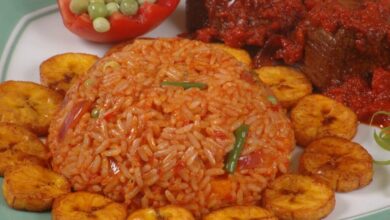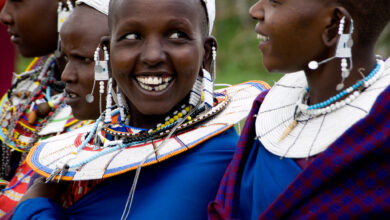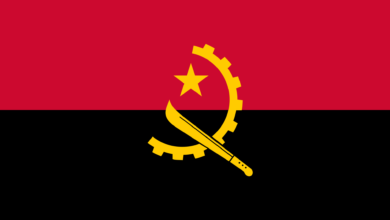The Democratic Republic of the Congo (DRC) Facts, History, Culture & Travel – Africa Facts Zone
A Land of Riches and Challenges

A Quick Overview of The Democratic Republic of the Congo (DRC)
Democratic Republic of the Congo: Country in Central Africa
Capital and largest city: Kinshasa
Official language: French
Population (2023 estimate): 111,859,928 (14th globally)
Area: 2,345,409 km² (11th largest in the world)
Independence from Belgium: 30 June 1960
President: Félix Tshisekedi
Economic highlights: Rich in natural resources, its largest export is raw minerals, and China is a major trading partner. It is ranked 179th on the Human Development Index.
The Democratic Republic of the Congo (DRC) is a vast and complex nation located in Central Africa, often overshadowed by its tumultuous history and ongoing struggles.
With its immense natural resources and diverse cultures, the DRC stands as a country of paradoxes—rich in potential yet facing significant challenges.
In this article, we’ll dive deep into the DRC’s geography, history, culture, and current socio-political landscape, providing a comprehensive overview of this fascinating nation.
A Glimpse into the Geography of the DRC
The DRC is the second-largest country in Africa, covering an area of approximately 2.34 million square kilometres. This makes it larger than Western Europe and home to a variety of ecosystems, including:
- The Congo River Basin: The lifeblood of the nation, this extensive river system is the second-longest river in Africa and supports a rich biodiversity.
- Rainforests: The DRC houses one of the world’s largest rainforests, which is crucial for global climate regulation and biodiversity.
- Mountain Ranges: The eastern part of the country features the Rwenzori Mountains, known for their stunning landscapes and unique wildlife.
Also Read: A Quick Overview of Cameroon
- Savannas and Plateaus: These areas are vital for agriculture and provide a stark contrast to the dense forests.
Borders and Neighbors
The DRC shares borders with nine countries:
- Northwest: Republic of the Congo
- North: Central African Republic
- Northeast: South Sudan
- East: Uganda, Rwanda, and Burundi
- South: Zambia and Angola
- Southwest: Cabinda exclave of Angola
This strategic location has historically made the DRC a crossroads of cultures and conflicts.
A Rich Tapestry of History
Early Inhabitants and Kingdoms
The DRC has a rich history that dates back over 90,000 years. Early inhabitants were Central African foragers. The Bantu expansion around 3,000 years ago brought various ethnic groups and cultures to the region.
Notable kingdoms included:
- The Kingdom of Kongo: Dominated the western part of the country from the 14th to the 19th centuries.
- The Luba and Lunda Kingdoms: Flourished in the central and eastern regions, known for their political organization and trade networks.
Colonial Era and Independence
The colonial era began in the late 19th century when King Leopold II of Belgium claimed the territory as his personal property, naming it the Congo Free State.
This period was marked by severe exploitation and atrocities against the local population. In 1908, the territory became a Belgian colony, and it wasn’t until June 30, 1960, that the DRC gained independence.
Post-Independence Turmoil
Political instability marred the post-independence era, leading to the dictatorship of Mobutu Sese Seko, who ruled from 1965 until his overthrow in 1997.
The DRC was renamed Zaire during his regime. The subsequent civil wars (1996-2003) left millions dead and displaced, creating a humanitarian crisis that continues to this day.
Cultural Diversity and Heritage
The DRC is home to over 200 ethnic groups, each with its own unique traditions, languages, and customs. The country recognizes four national languages: French, Kituba, Lingala, and Swahili, reflecting its colonial past and cultural diversity.
Art and Literature
Congolese literature has flourished as a means of expressing national identity and addressing social issues. Notable authors include:
- Frederick Kambemba Yamusangie: His works explore the cultural differences among Congolese people.
- Rais Neza Boneza: Focuses on artistic expression as a tool for conflict resolution.
The vibrant arts scene includes music, dance, and visual arts, with traditional and contemporary influences blending seamlessly.
Current Socio-Political Landscape
Political Challenges
The DRC’s political landscape remains fragile. Recent elections in December 2023 resulted in President Félix Tshisekedi securing a second term.
However, the government faces challenges in establishing stability, especially in the eastern provinces, where armed groups continue to operate.
Humanitarian Crisis
The DRC is currently facing one of the world’s most severe humanitarian crises, characterized by:
- Poverty: Approximately 74.6% of the population lives on less than $2.15 a day.
- Displacement: Over 5 million people have been displaced due to ongoing conflicts, particularly in the eastern regions.
Also Read: The Republic of Chad
- Health Crises: The country battles recurrent health emergencies, including cholera, measles, and Ebola.
Economic Potential vs. Reality
Despite being rich in resources—diamonds, gold, cobalt, and copper—the DRC remains one of the poorest countries globally.
Although the mining sector accounts for a significant portion of the GDP, it has not translated into widespread economic benefits for the population.
Environmental Concerns
The DRC’s vast rainforests are under threat from logging, mining, and agricultural expansion. Protecting these ecosystems is crucial not only for local communities but also for global biodiversity and climate health.
Conclusion: A Nation of Contrasts
The Democratic Republic of the Congo is a nation of incredible potential and profound challenges. Its rich cultural heritage, abundant natural resources, and resilient people stand in stark contrast to the ongoing struggles for peace and stability.
As the DRC navigates its complex history and strives for a brighter future, the world watches closely, hoping for positive change in this remarkable country.
FAQs about the Democratic Republic of the Congo
What is the capital city of the DRC?
The capital city of the DRC is Kinshasa, which is also the largest city in Central Africa.
What languages are spoken in the DRC?
The DRC has four national languages: French, Kituba, Lingala, and Swahili.
What are the main economic resources of the DRC?
The DRC is rich in natural resources such as diamonds, gold, cobalt, and copper.
How many ethnic groups are in the DRC?
The DRC is home to over 200 ethnic groups, each with distinct cultures and traditions.
What are the major health issues facing the DRC?
The DRC faces health crises, including cholera, measles, and Ebola, exacerbated by poor infrastructure and ongoing conflicts.
What is the current political situation in the DRC?
The DRC’s political landscape is fragile, with ongoing conflicts in the eastern regions and challenges in governance.
How does the DRC’s wealth contrast with its poverty levels?
Despite its vast natural resources, a significant portion of the population lives in extreme poverty due to corruption, mismanagement, and ongoing conflicts.





